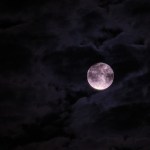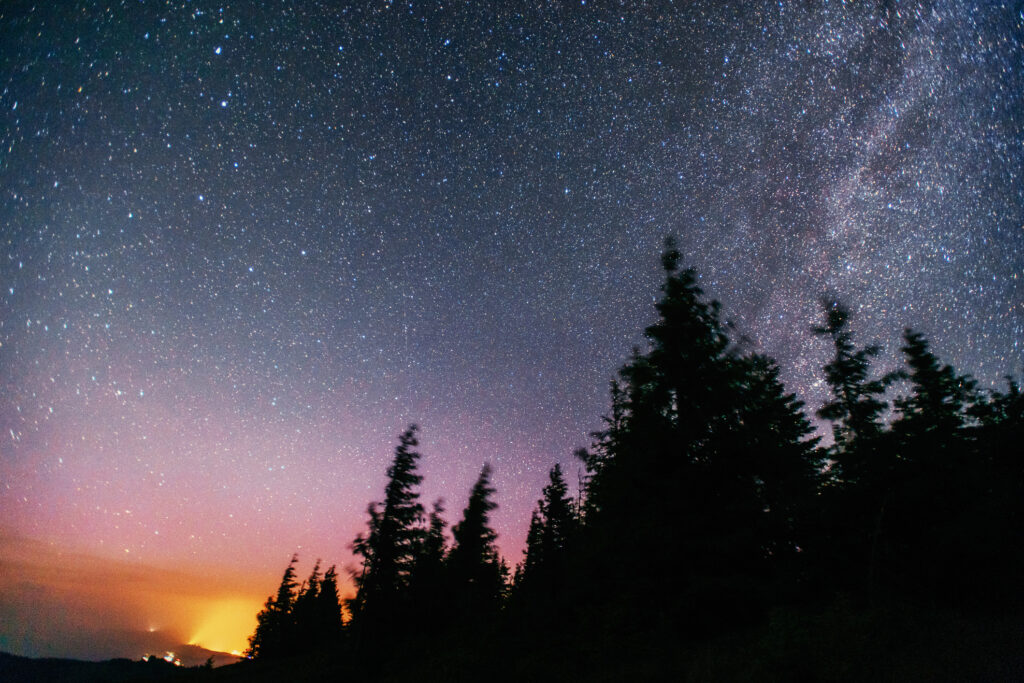April’s showers are certainly bringing May flowers across the United States, blanketing hillsides and mountains with colorful arrays of wildflowers. But planet Earth isn’t the only place where a flower spectacle is occurring: This month offers stargazers a Flower Moon to gaze upon.
There’s also plenty of other exciting things going on in the sky above — including a moon-Venus-Mars arc, a variety of constellations to behold, and a penumbral lunar eclipse — as spring enjoys its last full month before summer’s arrival.
Here’s a roundup of the best that the May night sky has to offer!
ECLIPSES AND MOONS

Penumbral Lunar Eclipse
Date: May 5
With a total lunar eclipse, the moon is eclipsed by Earth’s central shadow, known as its umbra, on occasions where the two objects are perfectly aligned. But during a penumbral eclipse, the “moon travels through Earth’s penumbra, or the faint outer part of its shadow,” and proceeds to dim “so slightly that it can be difficult to notice,” per NASA. This remarkable spectacle — the “gradual darkening of the moon as it slips silently into the partially-illuminated shadow of our world,” as described by Mental Floss — will mainly be visible to people throughout Africa, Asia, Australia, and Europe.
Full Moon | “Flower Moon”
Date: May 5
Also on May 5, this month’s full moon, known as the “Flower Moon,” will be in full bloom. Its name is inspired, of course, by spring’s blossoms this time of year across North America, The Old Farmer’s Almanac explains. The name has been attributed to Indigenous Algonquin peoples. This moon will reach peak illumination at 10:36 A.M. PT/1:36 P.M. ET.
New Moon | “Black Moon”
Date: May 19
As Time and Date notes, this month’s new moon is considered a “Black Moon.” Akin to the phrase “once in a blue moon” (which applies to full moons), this type of new moon is equally unusual. In this month’s case, it earns the distinction by being the third new moon in a season of four new moons, which takes place about once every 33 months.
And, as always, the new moon offers up the best overall stargazing opportunity of the month since the lack of moonlight makes the stars and planets more visible.
CONSTELLATIONS

Per Constellation-Guide.com, May offers optimal viewing of the below constellations — click on the links for more information about each.
Northern Constellations:
Canes Venatici
Coma Berenices
South of the Celestial Equator:
Centaurus
Virgo
Corvus
Crux
Musca
PLANETS

Moon-Saturn Conjunction
Date: May 13
In-the-sky.org notes that at 6:07 a.m. PT (13:07 p.m. UTC), the moon will pass 3°17′ to the south of Saturn, and will make a close approach, which is known as an appulse. They’ll be too far apart to fit within the view of a telescope, but you are likely to see them by simply looking closely, or with the help of binoculars.
Lunar Occultation of Jupiter
Date: May 17
At 12:40 GMT (5:40 a.m. PT) on May 17, Jupiter will disappear behind the moon, an event that will be visible from parts of the Americas and Europe, per Starwalk.space. You may have luck catching a glimpse with just your eyes, but of course, binoculars or a telescope will provide an even clearer picture.
Moon-Venus-Mars Arc
Dates: May 22-23
According to Andrew Fazekas of Astronomers Without Borders — by way of timeanddate.com — this occurrence ranks as one his top picks for astronomical events of 2023. “These three very different worlds will form an eye-catching arc formation on the 22nd,” he said. “Then on the 23rd, the moon will glide between the two planets. It’s a great display of celestial mechanics as the moon’s motion in space is reflected in its changing position in our sky. Bring out your binoculars, and you can also catch sight of a pair of bright stars shining beside the moon. These are Castor and Pollux, the lead stars of the constellation Gemini.”
Moon-Venus Conjunction
Date: May 23
As noted above, Venus will be on spectacular display this month and relatively easy to spot. Earthsky.org reminds us that Venus is the third-brightest celestial object following the sun and moon. “Venus looms higher up in the sky at sunset May 23, while the young moon is more submerged in the sunset glare. People with good vision (or binoculars) might see Venus as little as 10 to 20 minutes after sundown,” the website explains. “Once you catch Venus, seek for a faint glimmer of lunar crescent between Venus and the horizon at dusk May 23.”
Mercury at Its Greatest Western Elongation
Date: May 28-29
Mid-May is a great time to start looking for Mercury, especially for those residing in the Southern Hemisphere, per Earthsky.org. Mercury will be at its greatest elongation — meaning that it will be “farthest from the sunrise on our sky’s dome” — on Monday, May 29 at 6 UTC (11 p.m. PT Sunday), though it will continue to get brighter, and by early June, it will actually be easier to see in the early morning hours.
Happy stargazing!












